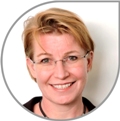One of my favourite Christmas presents this season was a book recommendation: Inheritors of the Earth: How Nature Is Thriving in an Age of Extinction written by British biologist and ecologist Chris D. Thomas.
As the gift-giver very well knows, I don’t particularly sympathise with ecologists, conservationists, and conservatives, as I find them irrational in their fixation on an imagined perfect world 50 to 150 years ago, which they cling on to at all costs, ignoring billions of years of evolution, and thinking they know better which species (and people) ought to be where and when.
The author of the book, Chris D. Thomas, is labelled “shockingly contrarian” because, in contrast to the popular perception of humans being in the process of causing the 6th mass extinction on this planet, he argues that biodiversity has increased in almost every country, county or island as a direct consequence of human activity.
 Development Roast Giving international development a proper roasting
Development Roast Giving international development a proper roasting





 Climate change, ozone layer, biodiversity, carbon footprint, glacial melt – these have become the buzz phrases of a generation. To some these problems seem far away, while others give up in light of their complexity and magnitude. But clearly we should not leave it to the ‘big boys’ of environmental politics to tackle the problems faced around the world. Active and informed engagement with environmental challenges will be necessary to find satisfactory solutions. Today, Development Roast brings you three initiatives from three countries offering environmental education and tools for engagement at the policy, academic, and grassroots levels.
Climate change, ozone layer, biodiversity, carbon footprint, glacial melt – these have become the buzz phrases of a generation. To some these problems seem far away, while others give up in light of their complexity and magnitude. But clearly we should not leave it to the ‘big boys’ of environmental politics to tackle the problems faced around the world. Active and informed engagement with environmental challenges will be necessary to find satisfactory solutions. Today, Development Roast brings you three initiatives from three countries offering environmental education and tools for engagement at the policy, academic, and grassroots levels.
